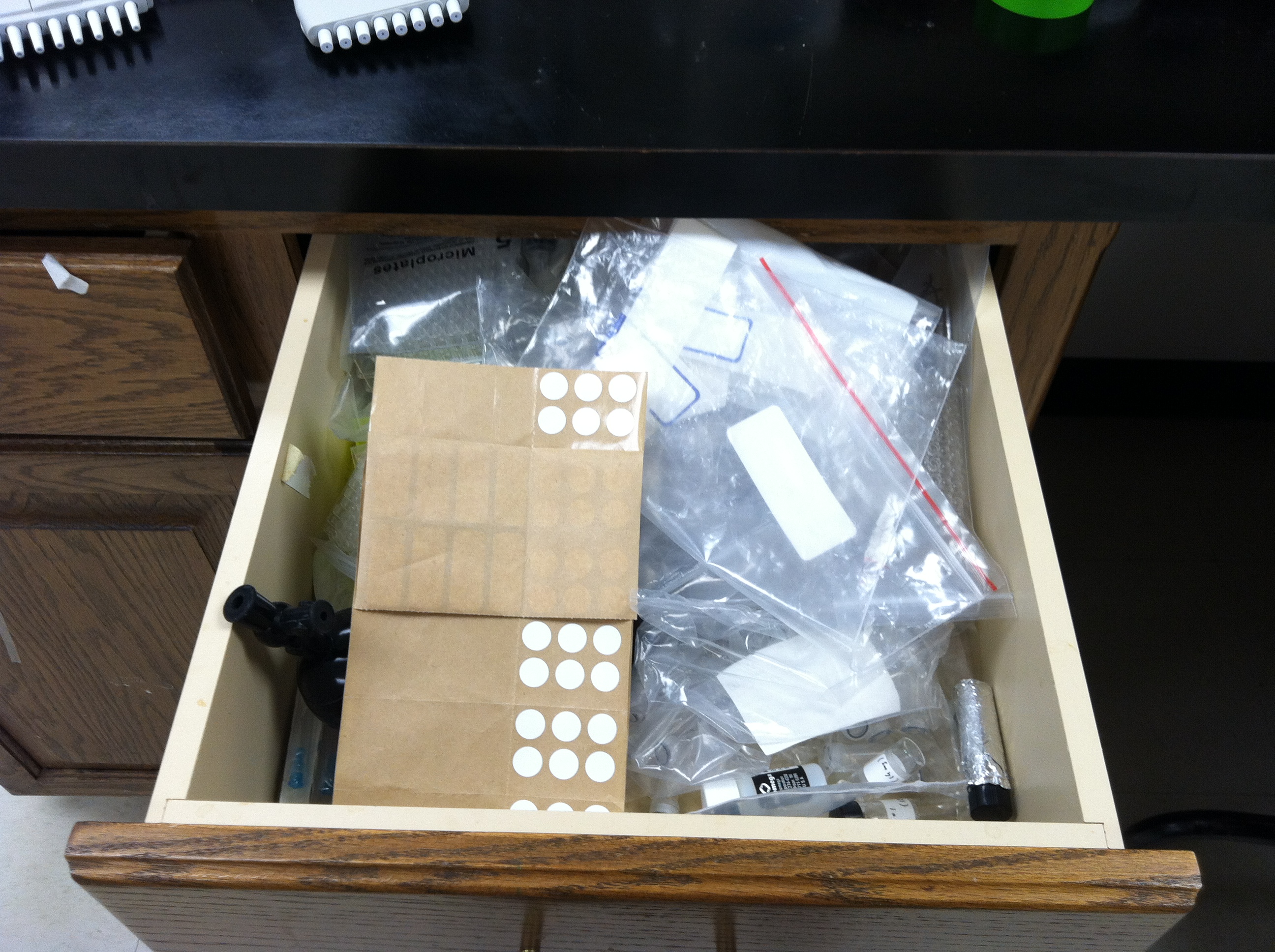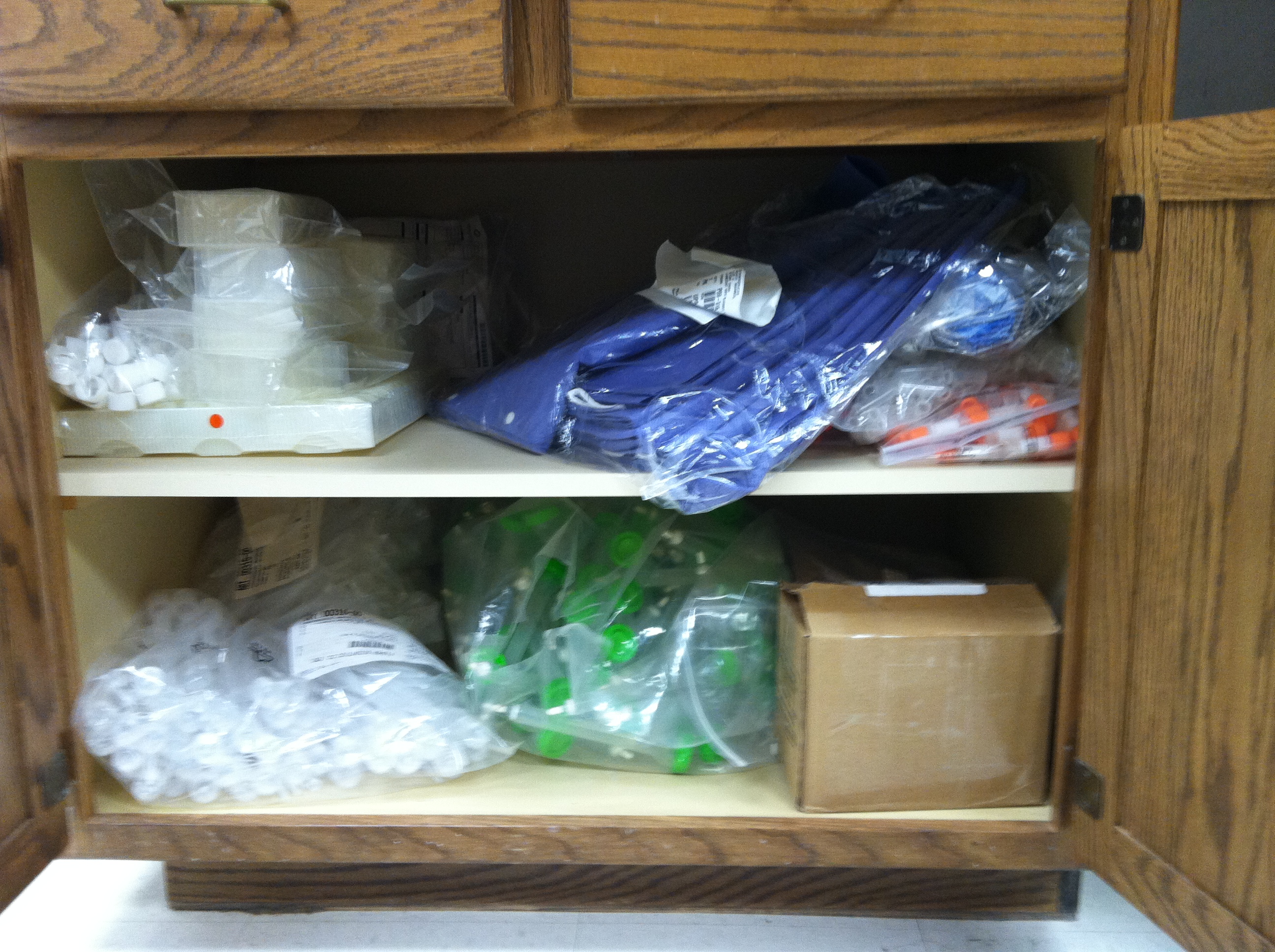
Note: Compulsive hoarding is a very serious mental health condition that we have seen exploited, in recent years, on reality TV. I don’t mean to make light of that condition, but I do want to have a little fun here.
If you have ever walked through a research lab you have probably seen most of these symptoms piled on lab benches and consuming storage space.
- Your lab bench is 10 feet long, but you only have two feet of work space. You have every possible reagent or kit out on your bench, including solutions you used five projects ago. All of these items must be out on your bench (instead of in cabinets and drawers) so you can see them and access them instantly when inspiration strikes. Besides, they wouldn’t fit in the cabinets even if you tried to put them there.
- Your lab is well funded, but you store every tiny piece of tin foil and every plastic bag in the event that you need to use them again. Still when you do need a piece of tin foil or a bag you usually use a new one anyway. You might even keep all the packing peanuts that come with shipments even though, in the rare event you did have to ship something, the mail room has plenty.
- Your shelves are full of old solutions and kits you haven’t used in at least a year. I mean, what if someone asks a question about stability down the road? How would you possibly test it? Those kits cost a lot of money. You know the day after you throw them away, someone will need to use them. And everyone knows salt solutions and buffers are fine, unless they start to precipitate or grow things. And if they precipitate, it’s nothing a 37°C water bath can’t cure. Yeah, you know you have NaCl and Tris on the dry chemical shelf and you know they are dirt cheap, but this solution is already made! Time is money!
- You keep items left by the previous occupant. Yes, you know you work with DNA and do mostly molecular biology, but one day you might need to study a protein and when that day comes bag of chromatography columns in the cabinet will be right there ready to use. Why waste all those perfectly good columns?!
- You keep equipment for techniques your lab updated 20 years. The old method was so complicated and involved. Technology finally developed faster, cheaper, and better ways to get to the same result. But what if, just… what if? No way you are ever getting rid of all the plates for big sequencing gels or the multiple water baths you used for PCR before the thermocycler was invented even though the lab now has several digital heat blocks. How else will you shame the new technicians for their laziness in sending that clone off to a core facility for sequencing?!

Are you a science hoarder? What things are impossible for you to throw away?
Karen Reece
Latest posts by Karen Reece (see all)
- She’s Going Soft! – A commentary on “hard” and “soft” sciences - July 30, 2014
- What are you so worried about? - June 9, 2014
- 5 Signs You’re Ready to Earn that Ph.D. - March 7, 2014

It seems that iam a Pretty Big Hoarder tooo,…i still have some my primary school exercise books dating back to 1978….!!!
I know i do keep track of my books,…but i do donate or dash out books to others….! Also i keep my books clean & well organised…!
I personally have a great respect for books regardless of titles….science, religion,arts,…i respect them….!
Keep it uppp….!
Here is another great blog post about decluttering in other areas of life, which are certainly applicable at the bench: http://domesticgoddessorbust.wordpress.com/wp-content/uploads/2013/10/17/decluttering-your-life/